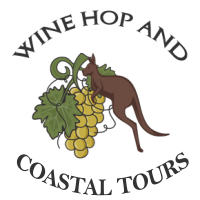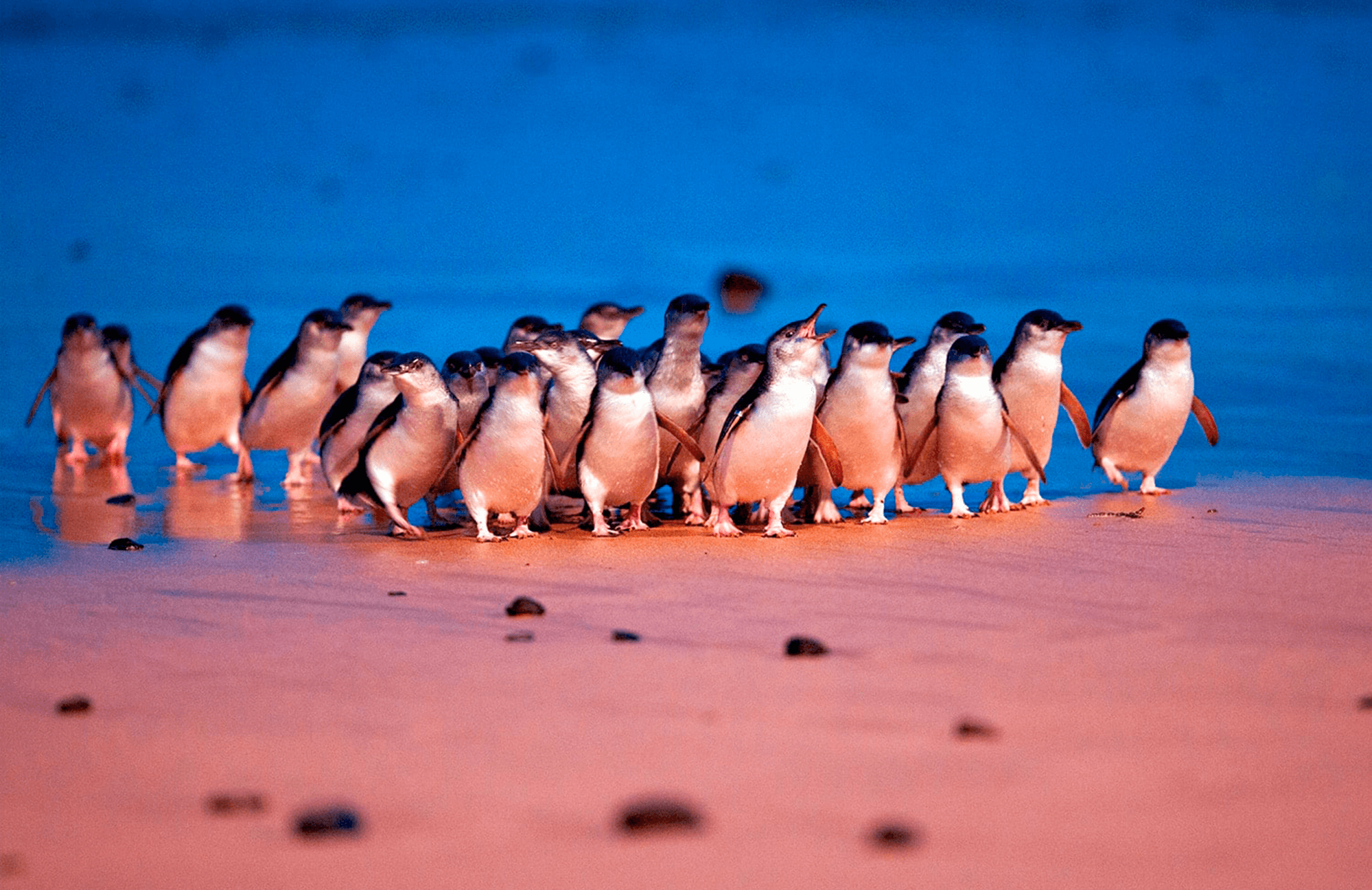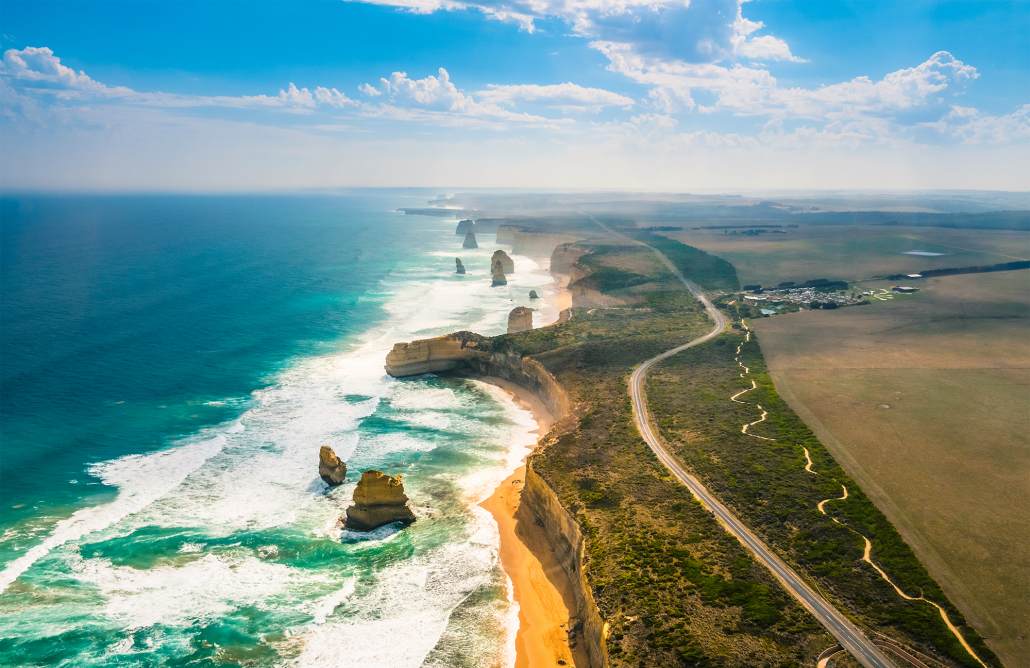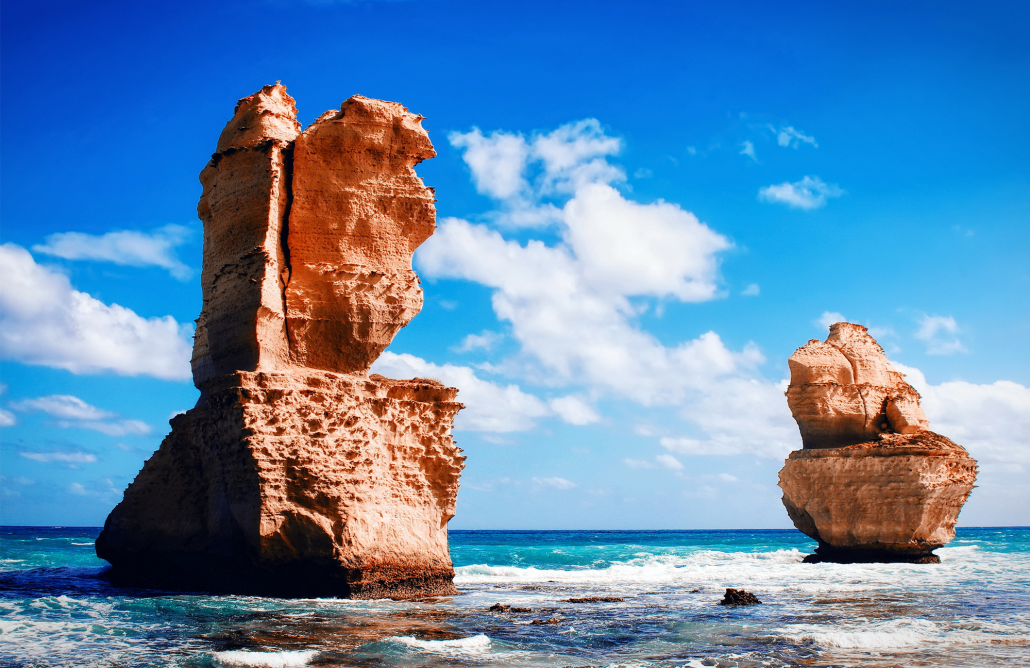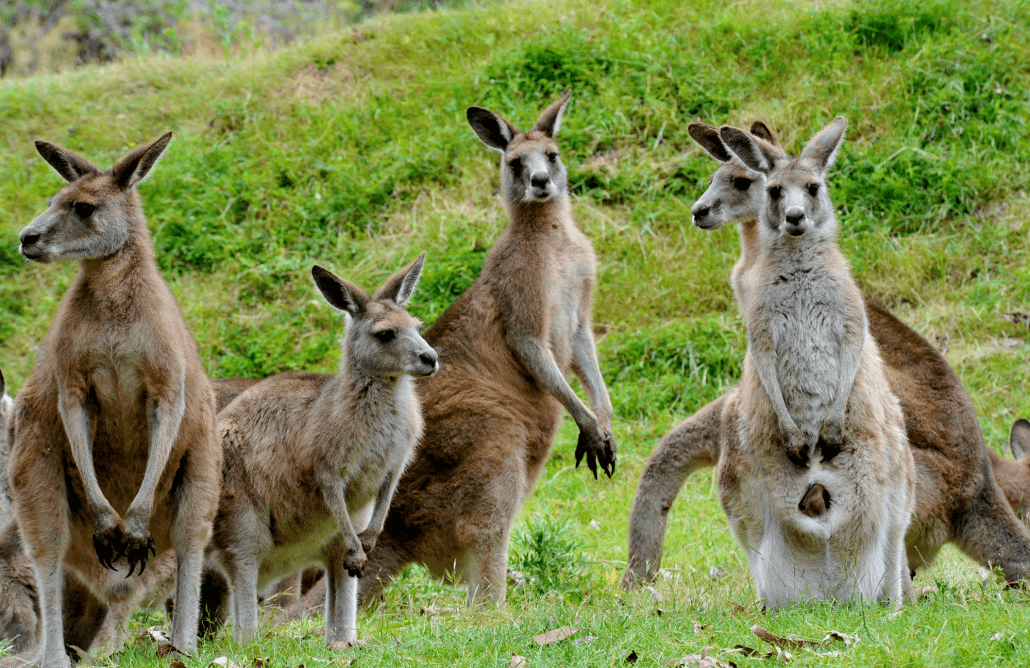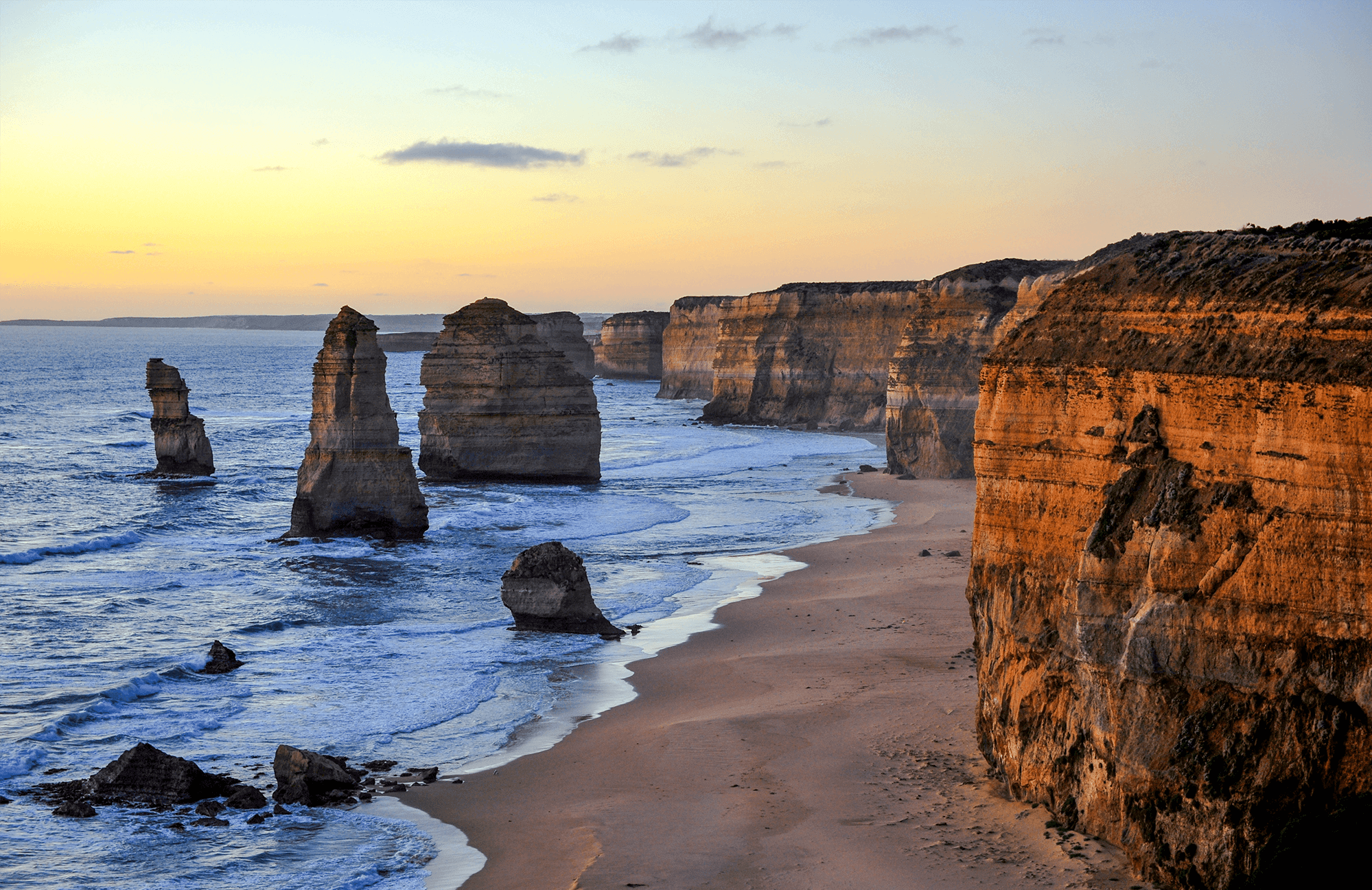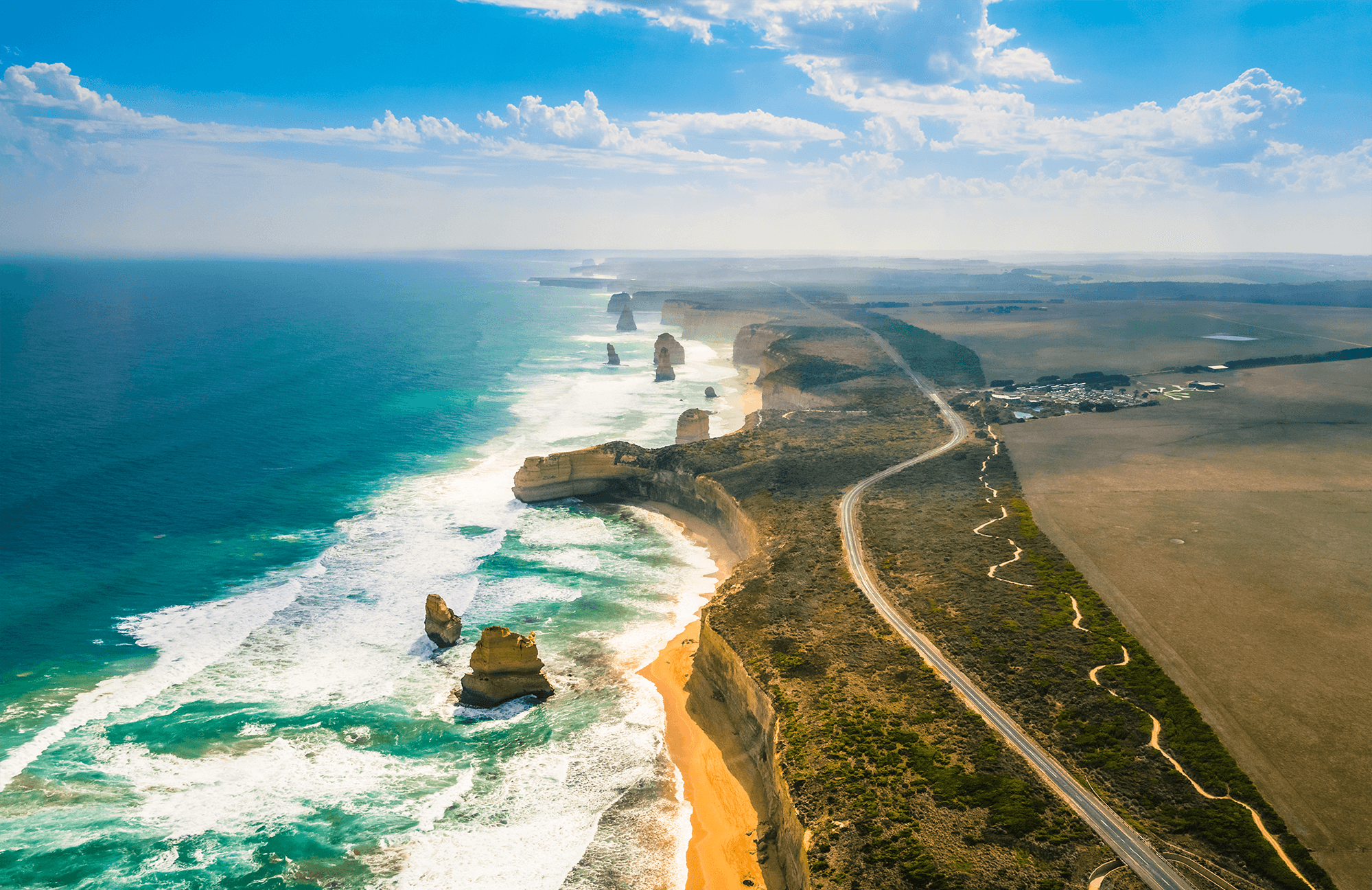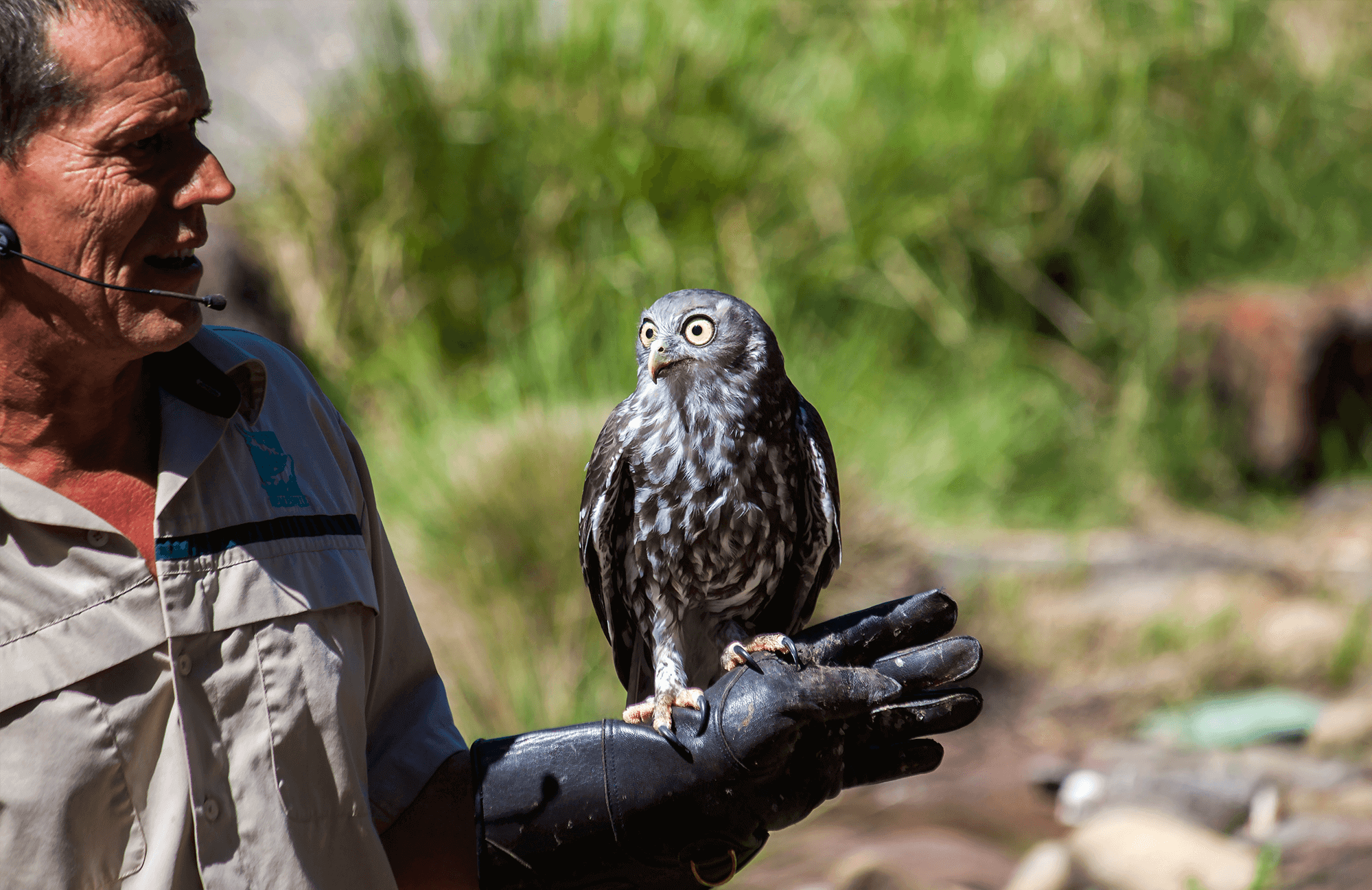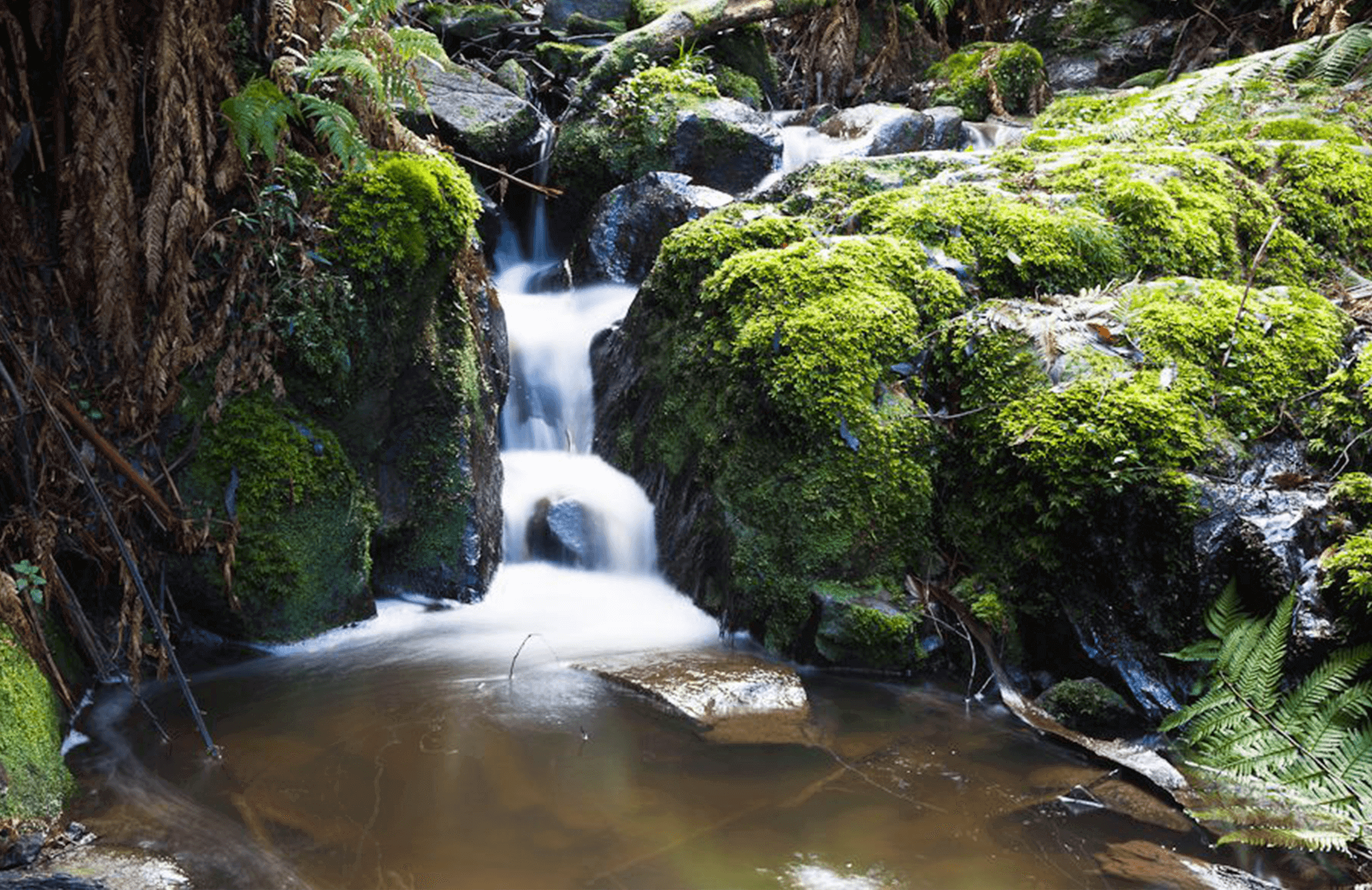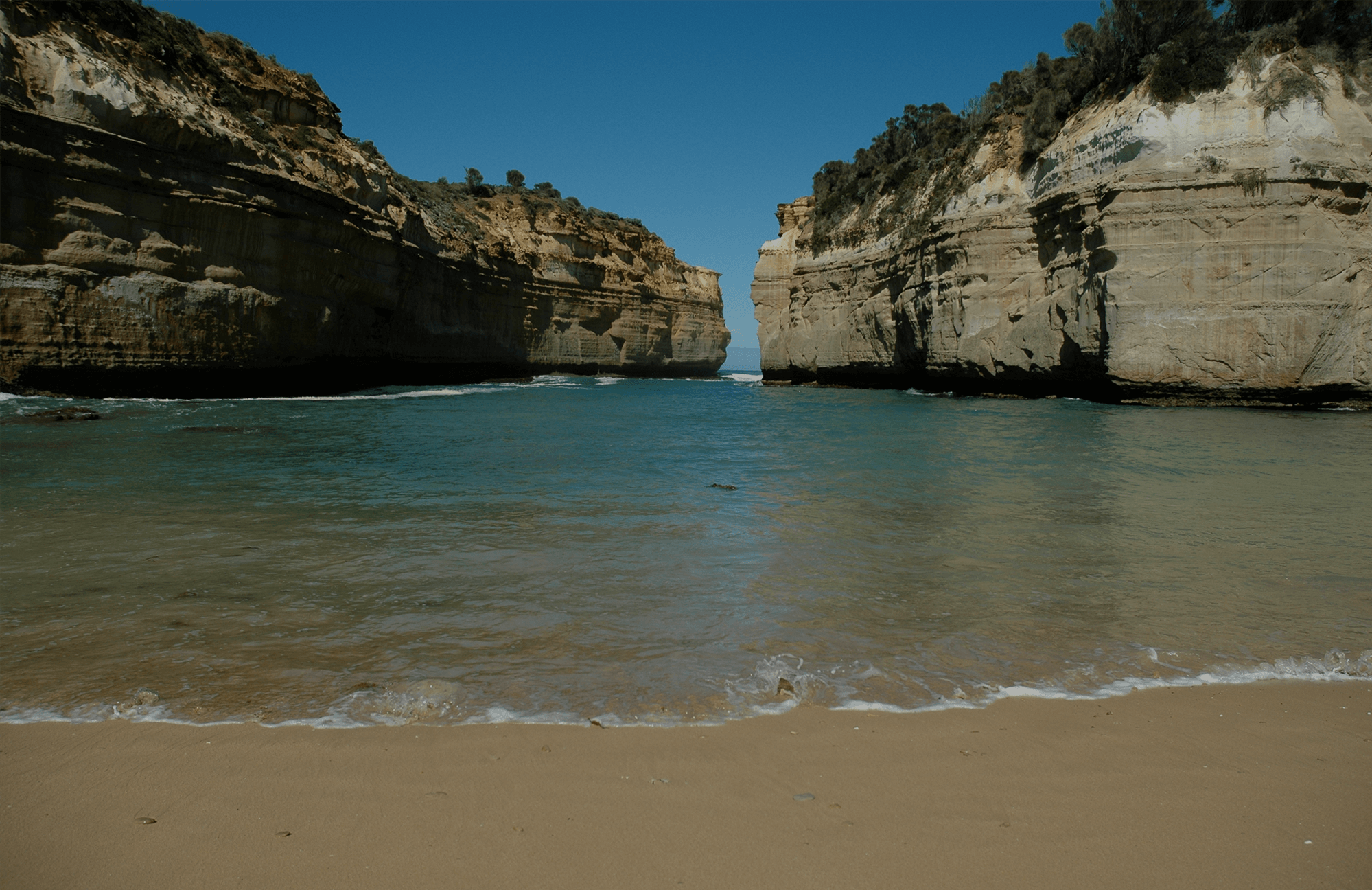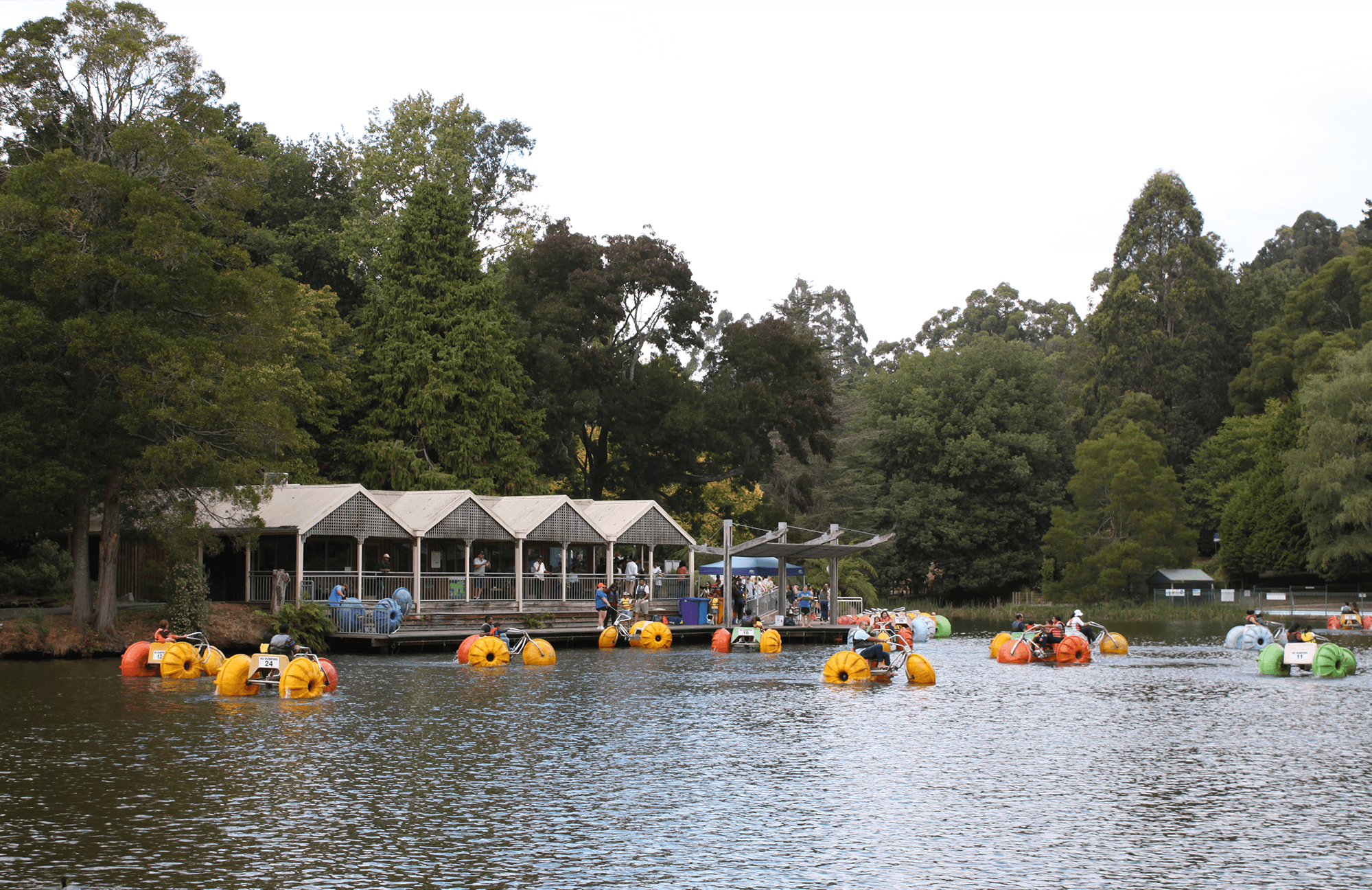Great Ocean Road

Great Ocean Road
Widely visible, the bridge towers over its surrounding area. Up close it is even more imposing. With up to 200,000 vehicles passing across on ten lanes every day, it is easy to appreciate the importance of its existence. But skill wasn’t always the first thing associated with the megastructure. Two years into construction, the building site became the scene of Australia’s worst industrial accident.
Half-way through the 20th century, Melbourne was a rapidly growing city. As the city’s industries expanded west, calls were growing louder for a crossing over the lower Yarra river, somewhere between Port Melbourne and Williamstown. Although investigations into the matter began as early as 1957, construction contracts were not signed until 1968.
By 1970, construction on the bridge was supposed to be finished. Instead of a year of celebration, 1970 was to become a year of tragedy. Just before noon on October 15th, a 112-meter span of the bridge collapsed. Weighing in at over 2,000 ton, the giant block of steel and metal fell 50 meters to the ground and water below.
At the beginning of a catastrophic chain of events lay a space of just over 11cm. 11.4cm was the vertical gap between two spans which needed to be connected. To bring them in line, one of the spans was weighed down with several concrete blocks, each weighing about 8 tons. This caused the span to buckle, in itself a sign of structural failure. In an effort to later straighten out the buckle, engineers removed a number of bolts which caused the span to snap back and subsequently collapse. This series of errors in judgement cost 35 workers their lives and injured another 18.
A Royal Commission, established to find the causes of the tragedy, published its findings in a 300-page report nine months later. Its verdict was damning. The designers, Freeman Fox and Partners, were found guilty of improper structural design and the original contractors, World Services and Construction Pty Ltd, were found guilty of putting forward inadequate safety margins – which would have been inadequate even had the bridge been completed.
Construction of the Westgate Bridge eventually was completed in 1978, ten years later, and has been in operation ever since. Twice as long as the Sydney harbor bridge and one of the highest bridges in Australia, the Westgate Bridge is one of the main arteries between Melbourne’s Central Business District and the city’s industrial suburbs in the west.
Meanwhile, the memories of the victims endure. A plaque commemorating the victims was unveiled in 1978, and the Westgate Memorial Park was opened on 15 October 2004, the 34th anniversary of the disaster, on the actual site of the Bridge’s collapse. Every year on the day, the families, friends, fellow workers gather at the site to pay their respects to the perished 35.
Another enduring reminder of the disaster can be found in the gardens of the engineering faculty of Monash University, Clayton campus: Here six twisted fragments of the collapsed bridge serve as a reminder to each new generation of engineers of the responsibility they carry and the potentially devastating consequences of their errors.
The Wathaurong People were Geelong’s first residents and they originally called the bay “Jillong” and the surrounding land “Corayo”. The name Jillong has a meaning similar to “a place of the sea bird over the white cliffs”. Somehow we got it all mixed up and now call the land Geelong and the bay Corio. The Wathaurong People have left Geelong with a lasting legacy, many of the regions much loved place names and its streets are anglicized versions of Wathaurong words, including Moorabool, Gheringhap, Malop, Moolap, Corio, Geelong, Barwon, You Yangs, Bellarine, Colac, Beeac and Birregurra just to name a few.
The first recorded European to visit the Geelong region was Lt John Murray who sailed the Lady Nelson who on February 1st 1802 sent a party led by John Bowen to explore the region. Murray returned a few days later and claimed the entire region for Britain. But it is thought Murray might not have been the first European to sail into Corio Bay, others including the Dutch, Portuguese or Spanish might have been in the region centuries earlier.
There is a bit of a legend that Charles La Trobe in 1871 found a set of Spanish keys in an excavation near where Limeburners Point stands a few hundred meters to the east of Eastern Beach. The keys (if they ever) no longer exist and details are a bit sketchy but there are some other stories in the region that help back it up including a story of a large mahogany shipwreck near Warrnambool, again to this day only a myth and never found.
Matthew Flinders sailed into Corio Bay on the 27 April 1802. He charted the entire bay, including the Geelong area. In January 1803, Surveyor-General Charles Grimes aboard the Cumberland sailed into the bay and mapped the area. If not the first, one of the earliest reported deaths of an Aboriginal person by Europeans occurred in October of 1803 when the First Lieutenant JH Tuckey and his party camped in the area around North Shore. Escaped convict William Buckley escaped to the area also around this time. Explorers Hamilton and Hume were the next through the region in 1824.
The name Geelong was given to the town in 1837 by Governor Richard Burke and was surveyed in 1838. In its early days, Geelong’s main trade was in wool. Some of the world’s best wool is grown in the Western District and region around Geelong and the city was important as a port. Much of the Geelong waterfront was surrounded by huge wool stores, some still remain today being redesigned for modern use including the Deakin University Waterfront Campus, Westfield Shopping Centre and National Wool Museum.
Woollen mills saw Geelong’s first big manufacturing industry and in 1925 it became the centre of Ford’s manufacturing facilities with a huge plant opening in North Geelong in 1926. Ford is still a major employer in the city with stamping, engine manufacturing and design facilities still in the city. Other major industry in Geelong today include Alcoa and Shell.
The gold rush in the 1850′s saw a turning point for Geelong. Geelong with its wool prosperity was starting to gain a bit of ground on Melbourne, but Melbourne ran a campaign dubbing Geelong “the ” which stuck Sleepy Hollow with the town nearly 100 years. There are also stories of a false map put out by Melbourne traders that showed Melbourne much closer to the goldfields than Geelong was. Some believe it was this map that fooled many of the Gold Seekers and enticed them to spend their fortunes in Melbourne. Melbourne won the day and developed much faster than “sleepy” Geelong.
Around the 1860′s Geelong developed the nickname “Pivot City”, a name that was in reference to Geelong being the central hub for shipping and rail to Melbourne, Ballarat and the Western District. Some local businesses still retain the Pivot name to this day but one local football club did change its name from the Pivotonians to the Cats in 1923 after adopting the Pivotonians name in the late 1870s from the previous Seagulls moniker.
Through the World Wars and through to the mid 70’s Geelong’s manufacturing boom, but with the change in markets and modern needs much of the industry slowed with many jobs lost including International Harvester on North Shore. Geelong went through tough times and the collapse of the Pyramid Building Society in the 1990′s really hit hard in the region. But with new investment and new opportunities, Geelong picked up its socks and looked to the future transforming its heavy reliance on industry. Today industry is still a force in the city, but thousands of new jobs have been created in health, education, services, retail, business, hospitality and tourism. With such great natural assets, it’s not hard to see why the change has been so successful.
Today the tag “sleepy hollow” is fortunately dead and buried, the city and surrounds are one of the most vibrant in Australia. The city centre and magnificent waterfront is a buzz of new developments and has been transformed into one of the finest examples of modern cities in Australia. New business is coming to town, hotels, shopping, apartments and places of leisure are all adding to the jewel that is Geelong. The suburbs are growing at a huge rate, Avalon airport is receiving visitors from all over Australia, our new ring road is almost complete and we are thriving. With its beautiful north-facing the waterfront, location to the Great Ocean Road’s magnificent beaches and Bellarine Peninsula Geelong is a winner. We have some of the country’s best major events and our Football club isn’t doing too bad either, winning their third AFL Grand Final premiership cups in 5 years in 2007, 2009 and 2011.
Bells Beach is named for William Bell (1844-1894) a Geelong grocer, councillor and Mayor who purchased land in 1864 from a split up of Gundry’s holdings into smaller allotments. Bell was a member of the Torquay Improvement Association and his Torquay house on the corner of Price and Pride Street became St Helier’s guest house. Reference is made to Bells Beach in newspaper articles of the 1880s and 1890s. The land was acquired by D C Lewis in 1899 and sold to John Calvert Bell in 1905 (no relation to William Bell). The discovery of Bells Beach as a surfing place was during the 1950s when members of the Torquay Surf Life Saving Club rode their motorcycles along the cliffs and carved out a rough track. In 1960 Joe Sweeney (1932-2015) hired a bulldozer and upgraded the track and extended it to Bells Beach. In 1962 the first surfing competition was held, the Bells Beach Easter Rally and became an annual event. By 1973 this event was included on the World Competitive Tour and has since been known as the Rip Curl Pro Bells Beach. The iconic Bells trophy was first created by Sweeney and every single trophy after that until his death in 2015. The trophy consists of a brass bell hanging from the wooden mount, and it is one of competitive surfing’s greatest honours and achievements to ring that bell.
Bells Beach Surfing Recreation Reserve has a Victorian Heritage listing being of social and historical significance to the State of Victoria. The landscape is socially significant as an international icon of Australian surfing culture; it is socially and historically significant as the location of the world’s longest continuous running surf competition; and it has historic significance relating to the development of surfboard and wetsuit technology.
The Wathaurong people inhabited the lands around Torquay for centuries before the first Europeans visited the area in the early 1800’s
Robert Zeally who now has Torquay’s bay named in his honor was one of the first settlers to the area. He took up land around 1851. The area was nothing much more than a place to picnic and then in the 1870’s some settlement started, with several people settling at Spring Creek, which was also the name of the township. Land was subdivided by the lands department in 1886 and the name was changed to Torquay in 1892 after Torquay a popular holiday resort town after the holiday resort in Devonshire England.
The Post Office opened on in August of 1894 and a bridge across Spring Creek gave easier access to towns further down the cost including Anglesea.
1891 saw tragedy off Point Danger on a nasty reef, when the sailing ship the Joseph H Scammell broke up in the heavy seas. Much of the cargo was washed up onto the beach and looted. Today the anchor of the Scammell stands as an eerie monument at the Torquay front beach. The coastline has reportedly taken over 15 ships between Torquay and Barwon Heads over the past 200 years. This wreck was responsible for the construction of the light house at Airey’s Inlet to try and stop some of the tragedies.
In 1900 a primary school was opened along side the newly-built Presbyterian Church in the community hall. A permanent school building was opened in 1910. Then other town facilities started to pop up including a bowling green, tennis courts and a golf course which were opened by the 1920s.
With car travel becoming popular in the 1920’s Torquay became a very popular holiday and day trip destination- and in the 90 years since has never looked back.
The Torquay Surf Life Savings Club was formed in 1946, it is the oldest and largest club in Victoria and one of Australia’s best respected. Their clubrooms were opened in 1971 after their original burnt down.
Bells Beach held its first Surf Classic in 1961. It is now the world’s longest running surfing competition – the Rip Curl Pro Surf attracts the world’s best surfers every Easter.
Ripcurl now one of the world’s great surf brands started in Torquay in 1969 when Alan Green moved to town and started making wetsuits and other clothes in a old bakery. He then went onto make another huge international surf brand Quicksilver with his friend John Law. Ripcurl and Quicksilver still operate in Torquay and have huge stores in the Surfcoast Plaza complex.
The 1980’s saw the beginning of the boom to hit Torquay which is still gathering momentum. The surfing industry expanded offering employment manufacturing and at the huge surf retail complexes. Today Torquay is one of the most popular places to move to in the region. The rolling hills of Torquay are rapidly changing from fields to huge housing estates.
Anglesea is a thriving coastal township and a very popular holiday resort being about a half an hour’s drive from either Geelong or the thriving resort town of Lorne on the Great Ocean Road. Anglesea is a blend of the quaint seaside charm of yesteryear, with its old boat houses, bed and breakfasts and laid back lifestyle combined with a vibrant cosmopolitan centre, with cafes, restaurants and boutique shopping.
Located about halfway between Anglesea and Lorne, Airey’s inlet is nestled between a marine park and the Great Otway National Parkland. Many people often skip this hidden treasure in the rush to get to the big tourist towns of the magnificent Great Ocean Road, thus missing out on the beautiful charm of this quaint friendly little town.
The Memorial Arch commemorates the World War One servicemen who built the Great Ocean Road. The present arch is the third built to replace the second one destroyed in the Ash Wednesday bushfires of February 1983. The timber log archway with cement and stone supports on each side spans the Great Ocean Road.
The Great Ocean was completed in 1932 as a memorial to those who served in World War One and the arch was first erected in 1939 as a memorial to Mr W.B McCormack, honorary engineer to the Great Ocean Road Trust. A plaque unveiled on the arch in 1939 commemorated those who served in World War One.
The arch was replaced in 1973 and again in 1983 when bush fires destroyed the second arch. Plaques commemorate the three arches and the 50th anniversary in 1982 of the opening of the road. A memorial plaque was unveiled near the arch on the 75th Anniversary of the opening of the road.
Nestled between the magnificent Otway ranges and Louttit Bay, Lorne is one of Victoria’s best known, and most popular resort towns. Lorne is a popular destination with day-trippers from Melbourne and Geelong visiting on weekend drives of the Great Ocean Road and makes for a fantastic holiday spot.
The river running through the town was named by surveyor George Smythe after the River Kennet in Berkshire England.
In 1882, Alex MacLennan and his cousins, the MacReas, were looking for an area suited to farming and fishing. MacLennan chose this site, which he named The Kennet. His cousins settled on the other side of the creek at a site named Wye River
Kennett River Post Office opened on 15 December 1938 and closed in about 1984.
The area is known for scenic coastal views, whale watching the Great Otway National Park, and surfing. Although Koala populations have declined across the country, Kennett River is still considered one of the best places in Australia to see them in the wild The Victorian State Government has implemented plans in the Cape Otway area to manage the koala population and improve their health, though some of the actions taken have been controversial.
The area is also home to a variety of birds, including cockatoos, parrots, rosellas, owls and Kookaburras,
Kennett River has a surf lifesaving club (SLSC) that was established in 1963.
The Gadubanud or Katabanut were known to the Europeans as the King Parrot People and are the traditional owners of the Apollo Bay area as well as much of the Otways. The Cape or Cape Otway as it is now known was discovered by the Europeans when Lieutenant James Grant surveyed the Victorian coast sailing the Lady Nelson in 1800. Several years after sealers and whalers began working in the region with the Henty Brothers whaling station set up at Point Bunbury on the west end of the bay. Today, the Apollo Bay Golf Course now stands on the site of the old whaling station.
The land was originally called Krambruk, which is an Aboriginal word for Sandy Place, then around 1877 the Europeans renamed it to Middleton, twenty or so years later the name again changed to Apollo Bay after the schooner the Apollo. The Apollo was sailed by Captain Loutit who used the bay as a refuge on a trip between Melbourne and Warrnambool in 1845.
In the late 1870’s and 1890’s a bit of infrastructure was built in the town including a school and a post office, churches and a pub, but with the rugged Otways access to the town was difficult and the only real means was by sea. But it wasn’t really until 1927 when the town saw some road access, then in 1932 the Great Ocean Road opened up the town and it never looked back, becoming an important fishing town and a very popular holiday destination.
Apollo Bay became a very important centre for communications in 1936 with the installation of a submarine telegraph and telephone cable to Tasmania. This was the first communication between the tiny island state and mainland Australia. Technology has now moved on and the line is no longer used, but the old station is a very popular and interesting tourist attraction in Apollo Bay.
During the 1950’s timber cutters came to the area and floated their timber to waiting ships in the bay. Timber has remained a very popular and successful industry in the area with blue gum, grey gum ash and silvertop messmate cut from the Otways for many years, today there is much plantation timber including pine on much land around the region with much of the timber exported as woodchips.
In 1900 building began on a spectacular railway line that ran between Beech Forest and Colac until 1962, serving Apollo Bay and the timber industry. Fishing became important to the town in the 1930s when the Great Ocean Road made possible daily deliveries of fresh fish to Melbourne. In recent decades, tourism has become the major industry of Apollo Bay.
One of Australia’s worst shipping disasters happened off the Apollo Bay coast on 10 July 1932 The coastal steamer Casino, was hit by a freak wave as it tried to berth at the town’s jetty, sinking and killing 10 people in front of many of the town’s people who were watching helplessly. The anchor of the vessel is now an important monument located outside the post office.
Immerse yourself in an ancient rainforest with giant Myrtle Beech trees towering over ancient tree ferns and a moss-covered forest floor. Spot the endemic carnivorous Otway Black Snail, look out for secretive long-nosed potoroos foraging in the leaf litter and at night hear the screeches of Yellow-bellied Gliders and owls.
Forming the first sightseeing stop in Port Campbell National Park, one of the major attractions on the 250 kilometre coastal road, the steps are just minutes away from the world-famous Twelve Aposltes site.
Over time, the weather conditions have sculpted and honed the steps into a spectacular natural wonder, completed by the two jutting rock stacks that languish in the ocean nearby. These are known as Gog and Magog, and can be seen from the viewing platform at the top of the steps.
Aside from the natural scenery on offer, the beach at the bottom of the Gibson Steps is popular for fishing, with plenty of colourful species of fish and sea creatures frolicking below the water’s surface. Despite the popularity of fishing, swimming here is highly unadvised, as the ferocious reefs and rip holes make for incredibly choppy waves.
Like most of the Great Ocean Road’s attractions, the Gibson Steps have a fascinating history that dates back hundreds of years. Originally, it is thought the steps were cut out by the Kirrae Whurrong people, a local tribe who called the area home.
It wasn’t until 1869 that the steps got their full use and their name. Pioneer Hugh Gibson built nearby Glenample Homestead and regularly used the carved steps to access the beach below. During this time, it was constantly used by fishermen and other seafaring workers to get to the beach and the water. Gibson is most famous for his role in the Loch Ard shipwreck. The two survivors, Tom Pearce and Eva Carmichael, regained their strength at his homestead.
On Earth, there are many beautiful natural wonders and most of them are present in the country down under. Australia is a home to a majority of beautiful places. The most beautiful waterfalls, the most scenic lakes, the most amazing fauna and flora, the most spectacular rock formations are all present is Australia. The Twelve Apostles is one such marvelous place located in Australia.
To describe the beauty of that place is a hard nut to crack. If you try attempt it, you will fall short of words. There is no word in the entire dictionary that could describe the beauty of that place. But, one thing is for sure that God must have been very pleased with Australia, that He has given this marvel to Australia.
Situated 7 kms east to Port Campbell, the 12 Apostles are a group of limestone stacks on the shore of Port Campbell National Park, Great Ocean Road, Victoria, Australia. From Melbourne, the 12 Apostles are just four hour drive away. You can drive through the Great Ocean Road treating your eyes with the stunning views.
The apostles are a result of erosion. The extreme weather conditions of the Southern Ocean are quite harsh and they caused the gradual erosion of the soft limestone forming caves in the tall cliffs. These caves then became arches and then collapsed. And what left were the 50 m high rock stacks.
Earlier this place was known as as the Sow and Piglets, then the name was changed to The Apostles and gradually, The Twelve Apostles, inspite of the fact that there were only nine stacks remaining. The erosion is an unstoppable process.
Today, only eight apostles are standing tall. The ninth apostle fell in July 2005. But, this site remained one of the most popular tourist destinations in Australia and receives thousands of tourists from all over the world.
Back in 1878, a large clipper ship engraved with the name Loch Ard beached on nearby Muttonbird Island after a tumultuous journey from England.
It was said that the ship enters the waters of Port Campbell on a dark and misty 1st of June. Before they even realised it, the ship was in shallow waters, colliding with a rock reef and running aground near Mutton Bird Island. Unfortunately, only two of the fifty-four passengers survived, one of whom was a nineteen-year-old sailor apprentice named Tom Pearce, and the other a nineteen-year-old Irish girl called Eva Carmichael, who was travelling with her family.
Tom was first to wash ashore at the sandy beach, hearing a woman’s cries for help nearby. He bravely headed up into the waters and rescued Eva, with the two calling for help from the locals. The two soon became famous amongst Victoria, with Tom being welcomed as a hero. After about three months, Eva decided to return back to Europe where she went one to marry an aristocrat. Tom remained a sailor and returned to England where he died at the age of 49, known as a hero of his time
Back in June 2009, the arch of Island Archway crumbled in on itself, leaving two separate hunks of rock that run parallel to each other. Many of the landmarks along Australia’s Great Ocean Road collapse thanks to weather conditions or water damage, which serves to create an ever-changing landscape.
The two remaining rock pillars of the gorge have been named Tom and Eva after the two survivors of the shipwreck back in the 19th century
Loch Ard not only has an interesting backstory, but it has also been an important backdrop in many fictional stories since then. It’s been the official location for a number of movies, including The Pirate Movie, which was filmed in 1982, and the 1999 TV series Journey to the Centre of the Earth.
Now sit back and relax as we travel about an hour to Colac where we stop for dinner.
Prior to European settlement the area around Lake Colac was occupied by the Kolijon or Coladjin Aborigines and the town's name is thought either to derive from this tribal name or from a Kolijon word referring to the ‘fresh water’ of Lake Colac. Accounts of the number of indigenous people living in the area when white people arrived vary, but there were mostly likely several hundred living in tribes camped around the resources offered by the lake. John Co-Coc-Coine, known as 'King of the Warrions', was the last chief of the local tribe and died in 1865.
The first European to settle in the area was the pastoralist Hugh Murray, who arrived on The Gem at Geelong in 1837 after first trying Tasmania. It was also in 1837 that the explorers Joseph Gellibrand and George Hesse went missing in the area. Their bodies were never found and they were presumed to have been killed by Aborigines. Their names are honoured in the township of Gellibrand, a river, and as Colac street names.
With other pastoralists Murray headed west from Geelong. Thomas Austin stopped to establish Barwon Park near what is now Winchelsea. Twenty years later Austin would make the fatal mistake of releasing rabbits onto his estate. In a few years they reached plague proportions and prompted the construction of the stone walls which distinguish the area. A canning factory built in 1871 canned millions of rabbits for export to the UK. The Duke of Edinburgh visited the Colac area in 1867, but left scars of resentment caused by his snubbing of Colac with an abbreviated visit cut short by extending a stopover with Thomas Austin at Winchelsea when hunting parties slaughtered thousands of rabbits. In 1880 the First Rabbit Act was passed, making landowners responsible for the destruction of rabbits on their own property.
Hugh Murray continued west, settling near Barongarook Creek at the southern end of Lake Colac and building his first homestead in 1840 in what is now Chapel Street. Colac’s main street, now part of the Princes Highway, is named in Murray’s honour.
A number of early settlers contributed to the country's pastoral history, establishing substantial enterprises, building impressive homesteads, some of which still stand today, and playing important roles in the area’s European settlement.
In 1864 Colac was proclaimed a shire and Colac's first newspaper, the Observer, was published in 1866. The Observer and its fierce rival, the Herald, eventually merged to become the Colac Herald which is still today published three times a week. The railway from Geelong and Melbourne arrived in Colac in 1877 and was soon followed by lines connecting Colac to nearby townships such as Forrest and Beeac and the narrow gauge line into the Otways around the turn of the century. The first hospital was built in 1879, while the first community hospital in Victoria was opened at Colac in 1934.
Some of the larger old pastoral runs, such as the huge holdings of the Robertson family, were subdivided late in the nineteenth century for closer settlement and this process was intensified by further subdivisions after World War I for soldier settlement schemes. The settlement became a borough in 1938, a town in 1948 and a city in 1960.
